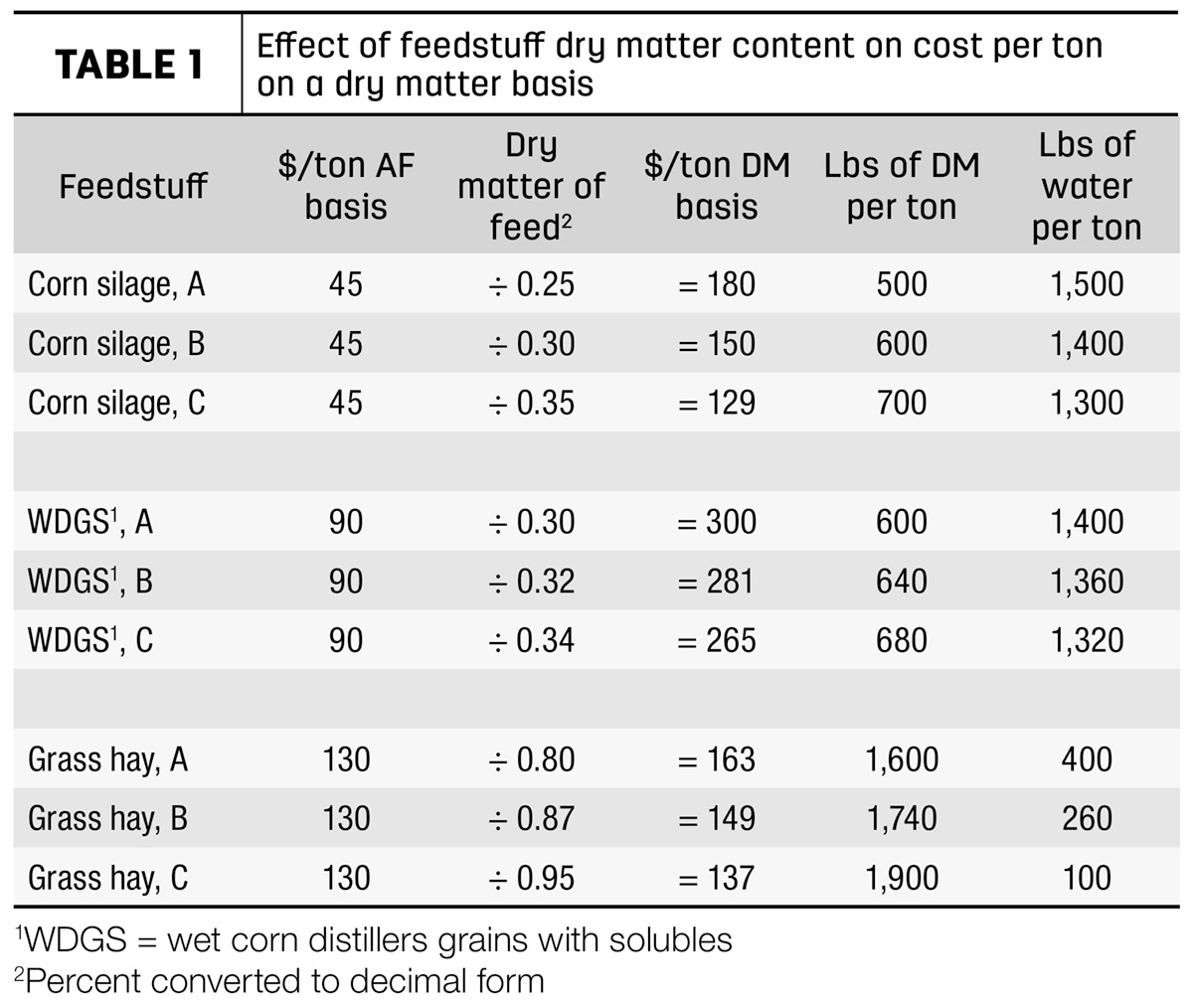Mark Twain has often been credited with the infamous statement, “Whiskey is for drinking; water is for fighting.” While the applicability of this quote varies based on the context in which it is used, it highlights the fact that water is a precious and valuable resource. Just as we pay for bottled water at the convenience store, we pay for water when we purchase and/or harvest feedstuffs for beef cattle. This is an important concept to keep in mind, as nearly every feedstuff commonly used in nutrition programs for beef cattle (with the exception of pure forms of some minerals and vitamins) can and will gain or lose moisture depending on harvesting, processing and storage conditions.
The term dry matter, or DM, is commonly used to refer to the feed left over when the moisture or water from a sample of any given quantity is completely removed through drying. When expressed by difference on a percentage basis, percent DM = 100 - percent moisture. Likewise, percent moisture = 100 - percent DM. Having a fundamental understanding of DM is critical for accurately pricing both similar and different types of feeds. Given that practically all feeds have both a dry and a moisture component, the price must always be adjusted relative to the moisture level so feeds are compared “apples to apples.” While we typically think about pricing feeds as they are on an as-is or as-fed (AF) basis, pricing on a DM basis allows for a direct and more accurate comparison of the dry quantity of feed being evaluated. This is most important for feeds with a low DM content like silages or wet byproducts because they are mostly water, and buying water can be expensive.
To adjust the price of a feedstuff from an AF to DM basis, simply take the price per unit of measure and divide it by the DM content in decimal form. If we harvested wheat as silage this past spring, and we have it priced in the bunker at $30 per ton on an AF basis, that would equate to $111.11 per ton on a DM basis if the silage is 73% moisture (27% DM): $30 per ton AF basis ÷ 0.27 = $111.11 per ton DM basis. Think about the concept of dilution because water accounted for within any given quantity dilutes the cost per unit, but the total costs incurred for a given quantity will be the same whether on an AF or DM basis if price is adjusted accordingly. For example:
- 20 AF tons of wheat silage, 27% DM, at $30 per ton equals $600 ($30 × 20 tons)
- 5.4 DM tons of wheat silage (20 × 0.27) at $111.11 per ton equals $600 ($111.11 × 5.4 tons)
Remember the following concepts:
- Price per unit will always be higher on a DM basis (water is gone).
- Price per unit will always be lower on an AF basis (water is present).

As the DM content for a given feed increases and moisture therefore decreases, the cost per unit on a DM basis decreases, provided the AF cost stays the same, because that same total cost is spread out over more units of DM (Table 1). Using the prices for wet distillers sources A and C in Table 1, and assuming either of those sources (each has the same nutrient composition) was going to be fed in a diet at 7 pounds of DM per head per day, that would be a difference of 12 cents per head per day between the two sources. In order to feed 7 pounds of DM of wet distillers A, we would need to feed 23.3 pounds AF basis (7.0 ÷ 0.30 = 23.3). Given that wet distillers C is drier, only 20.6 pounds AF basis is needed to be fed to provide the same 7 pounds of DM (7.0 ÷ 0.34 = 20.6). In this example, while 4 percentage units may appear to be a relatively minor difference in DM content, it can substantially influence the cost of the feeding program.
- WDGS A: $300 per ton DM basis ÷ 2,000 pounds per ton = 15 cents per pound DM × 7 pounds DM = $1.05
- WDGS C: $265 per ton DM basis ÷ 2,000 pounds per ton = 13 cents per pound DM × 7 pounds DM = 93 cents
Remember, the concept of moisture and DM is fundamental for beef cattle nutrition programs. While the terms AF and DM basis are commonly used, they can be easily misinterpreted or overlooked. It is important to account for moisture differences when comparing and pricing feedstuffs, particularly for those with high moisture content. Keep in mind that water can be costly regardless of whether one is utilizing on-farm/ranch feedstuffs or evaluating options for purchased commodities.











